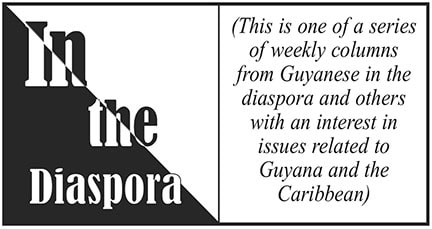As the IDB report notes of prison infrastructure today, “it is important to reiterate that people are sent to prison for punishment, not as punishment.” This is as true now as it was in 19th-century British Guiana, when administrations did not necessarily prioritise developing the prison estate or reducing the overcrowding prison populations faced. Our research into the historical effects of overcrowding highlights the impact it had on the provision of basic services, such as medical care and sanitation. Due to the lack of secure space prisoners were frequently locked in overcrowded wards and cells for 12 hours a day with limited means of occupation or exercise. In an environment prone to the spread of disease, the combination of crowded cells and poor sanitation often underlay outbreaks of sickness that could prove fatal.
The effect of this environment on the mental health of prisoners was acknowledged from as early as 1830, when contemporaries noted that bouts of melancholy, insolence, and ‘idleness’ were increasing. The practice of confining convicted prisoners with mental health problems for observation added to this pressure, as before the routine use of the New Amsterdam Lunatic Asylum (now the National Psychiatric Hospital) from the 1870s the prison infrastructure lacked resources and expertise to deal with them properly. Although attempts were made to isolate those with poor mental health, in practice there was often little difference in the conditions they and ordinary inmates experienced.
The impact of these conditions was also acutely felt amongst the prison officers whose responsibilities often entailed what their superiors called significant ‘physical exertion and mental anxiety’. This was further exacerbated by outbreaks of prison violence, as well as poor training, unsuitable accommodation, and low morale. The high rates of recidivism, and the constant churn of staff turnover demonstrate the effect that these conditions had on the physical and mental well-being of those living and working in prisons.
Although attempts to improve conditions within the system emerged in line with fresh thinking regarding the importance of rehabilitation, these remained limited. This was partly a question of capacity, and partly of resources. However, it was also a consequence of fundamental and irresolvable tensions regarding the role of prisons. How can such closed institutions confine people without inflicting physical and mental harm?
Overcrowding has remained an issue in Guyana’s post-independence era. It affects the mental health of prisoners who arrive without prior diagnosis. Meanwhile, those with pre-existing mental health disorders face the same environment while also managing their illnesses. The impact of overcrowding has been revealed in the interviews that we have conducted with prisoners, some with diagnosed mental health disorders. Those interviewed noted the distress caused by living in noisy, overcrowded spaces. Such environments mean there is little privacy with prisoners having to share facilities and resources including sometimes beds.
The presence of those with mental health disorders in prison speaks to wider infrastructure issues. At least until the 1980s, the policy was to avoid placing those with mental health conditions in prison. However, the National Psychiatric Hospital was and remains at capacity. It also does not have the secure facilities needed to house those with mental health conditions who commit crimes. Instead, those who need the most oversight are placed in what is known as the chalet – a small building within the Camp Street prison compound in Georgetown – where they are visited by mental health professionals.
Rehabilitation programmes for addressing the psychological and social needs of prisoners exist. However, the structure of the mostly 19th-century maximum security prisons of Georgetown, Mazaruni and New Amsterdam, means that there are only limited facilities to operate them. Additionally, overcrowding means that many of the spaces previously available for rehabilitation programmes are now being used to house prisoners. Thus, those who are impacted by the conditions of prison do not always get the support they need.
The situation in Guyana today is a direct legacy of the nation’s colonial past. The infrastructure of the three historic prisons date from the British period, and reflect 19th-century ideals of punishment and reform. In those sites, and others in the prison estate, our work with prison officers has also revealed that the rules and regulations in force are also little changed since the colonial period. What we have perhaps not known before we began work on our project is the extent to which the country’s prisons date from an era when the British colonial government desired social control over the newly-emancipated population of formerly enslaved men and women, and later on Indian and Chinese indentured migrants. Over 150 years later, this seems remarkable. Is this the time for Guyana’s citizens to work out what purpose they want prisons to serve? Can this address the mental health crisis that we see in the nation’s jails?
The project is led by Professor Clare Anderson, Professor of History, at the University of Leicester. A project website can be found at this address https://mnsguyana.le.ac.uk/

 RSS Feed
RSS Feed